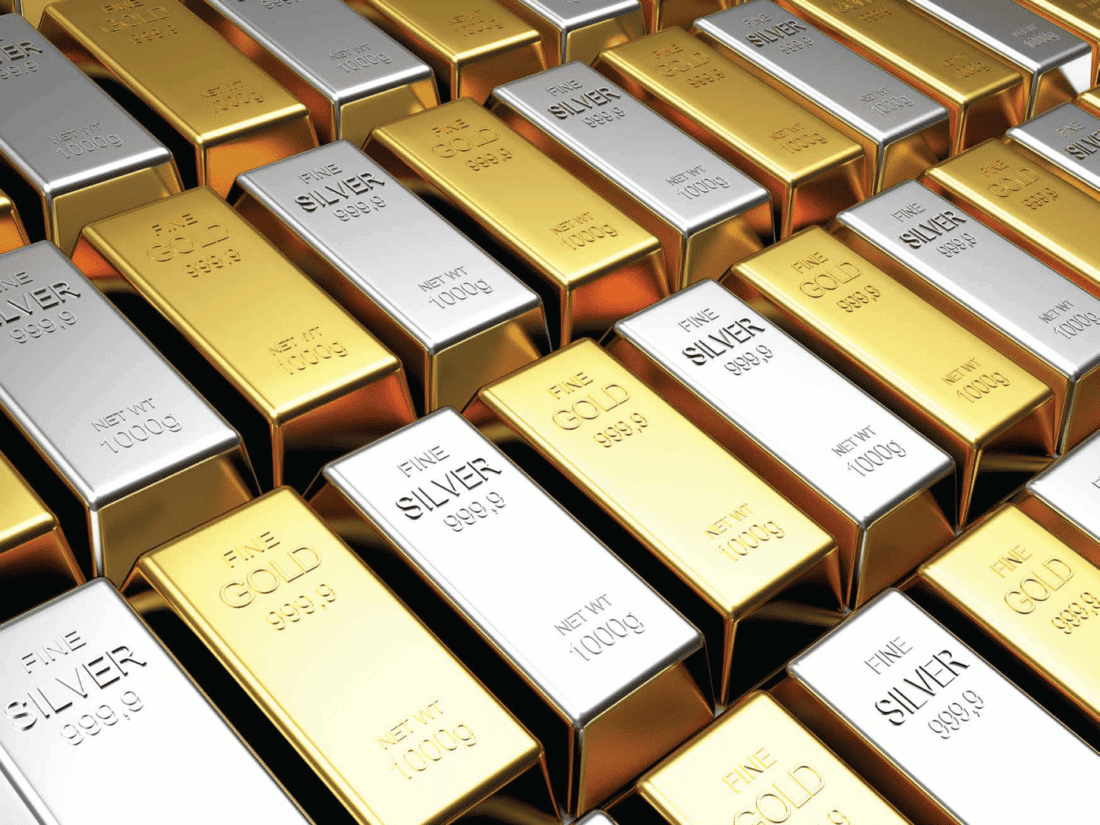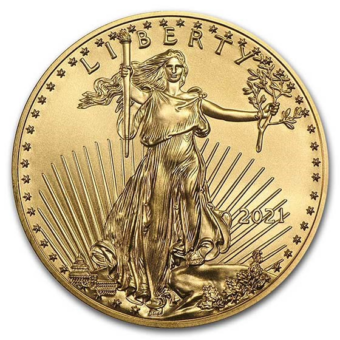The Gold Trail: A Daily Journey Through the Week's Market
Monday - 7.03.23: Gold dipped $3 to $1907 amid summer slowdowns and influence from the Fed's actions. Despite a hard first half of the year, gold saw a 5.7% gain while silver declined by the same percentage.
Tuesday - 7.04.23: US Independence Day - Markets Closed
Wednesday - 7.05.23: Gold increased slightly to $1930 due to ongoing inflation and rate concerns, while silver decreased to $22.89. Asia's growing economic power and belief in gold as a stable value source have contributed to the "Great Gold Migration" from West to East.
Thursday - 7.06.23: Gold rose moderately to $1929.50, and silver increased to $23.31. Market fluctuations are expected ahead of unemployment and payroll figures. A survey by State Street Global Advisors revealed that one-fifth of investors with at least $250,000 in investable assets have some gold exposure, primarily through ETFs, physical holding, or gold mining stocks. Most respondents see gold as a hedge against inflation and economic downturns.
Friday - 7.07.23: Gold rises modestly, silver up marginally, bond market plunges. Natural resource investment firm, Goehring & Rozencwajg, predicts long-term gold price between $12,000 to $15,000 per ounce, attributing to central banks' behaviors.
WGC Highlights its Asymmetrical Performance Amid Market Uncertainty
The Federal Reserve's aggressive policy stance to lower inflation is pressuring gold prices, which are struggling to remain above $1,900 an ounce. However, the World Gold Council (WGC) suggests that precious metals holders should maintain their interest in gold due to its asymmetrical performance expected to support prices in H2 2023. The WGC predicts relative stability in gold prices through the end of the year, currently around $1,915 an ounce. WGC's head of research, Juan Carlos Artigas, noted the ongoing market uncertainty regarding the impact of the Federal Reserve's policies on the global economy, but emphasized the importance of gold in investor portfolios due to potential economic risks. Despite a recent selloff below $1,950 an ounce, gold has outperformed bonds and cash in 2023. The WGC highlights gold's 5.4% gain in H1 2023, asserting that gold positively contributes to investor portfolios and helps mitigate volatility.
Gold Rises Amid Weaker Than Expected Job Creation and Persistent Wage Inflation
Despite the creation of 209K jobs in June, gold prices are rising due to a perceived weakening momentum in the U.S. labor market and lower than expected job creation. The U.S. unemployment rate has met expectations by falling to 3.6%, and gold prices have responded by pushing back to initial resistance levels, with gold futures now trading at $1,930 per ounce. The report also highlighted persistent wage inflation with average hourly wages increasing by 0.4% to $33.58 last month. Although gold prices are experiencing some gains, investors must grapple with the Federal Reserve's aggressive monetary policy stance. While the central bank is not expected to change its stance, the employment data introduces uncertainty. However, the long-term uptrend for gold remains unchanged.
ADP Numbers Trigger Silver Plunge, But Quick Recovery Indicates Hopeful Outlook
Silver faced a significant setback during Thursday's trading session following the release of stronger-than-expected ADP numbers. The market price of silver reached just below the 200-Day EMA, but showed signs of a resurgence post the plunge. The market's recovery will depend on a potential breakthrough above the 50-Day EMA, which could lead to silver reaching higher levels of around $24.50 or even $25. Friday is expected to bring considerable volatility due to looming uncertainties. The silver market is notably sensitive to global growth and multiple factors contribute to its volatility. Despite the recent drop, the immediate recovery indicates potential for continued growth, given the market finds enough buyers.
How ADP Numbers Affect Gold and Silver Prices: If the ADP numbers show strong job growth and a healthy job market, it generally indicates a strong economy. In such cases, investors may feel more confident in the economy and be less inclined to invest in safe-haven assets. As a result, gold and silver prices may experience downward pressure.
Bank of America Downgrades Gold and Silver Prices for 2023 as Fed Rate Hikes Deter Investors
Bank of America has lowered its price forecasts for gold and silver in 2023 due to the Federal Reserve's hawkish monetary policy, which is discouraging investors. The bank sees gold prices averaging around $1,923 an ounce, down 4% from their previous estimate, citing rising bond yields and a stronger U.S. dollar as factors keeping investors away. Silver is also downgraded, with an average price target of $22.89 per ounce. The analysts expect silver to underperform gold in the short term but believe it will outperform once buyer interest returns. The bank also downgraded platinum and palladium prices, citing headwinds from global economic conditions. In contrast, they see growth potential in copper and molybdenum.
While Bank Forecasts Are Important, They Have a Reasonable History of Missing the Mark, Big Time
Gold and silver price forecasts have also seen instances of inaccuracy or deviation from actual market outcomes. Here are a few notable examples:
- Gold Bull Run in the 2000s: During the early to mid-2000s, some banks underestimated the strength and duration of the gold bull market. They failed to anticipate the significant price appreciation that occurred during that period.
- Gold Price Drop in 2013: Many analysts and banks predicted that gold prices would continue to rise or at least remain stable in 2013. However, gold experienced a sharp decline, catching forecasters off guard.
- Silver Price Surge in 2011: Prior to 2011, several institutions underestimated the rise in silver prices, with some even suggesting a bearish outlook. However, silver experienced a notable rally during that year, reaching multi-decade highs.
- Gold and Silver Correction in 2018: Forecasts leading up to 2018 suggested that gold and silver prices would see a sustained recovery and upward momentum. However, both metals experienced a correction and faced downward pressure during that period.
These examples demonstrate the challenges of accurately predicting gold and silver prices due to various factors such as economic conditions, investor sentiment, geopolitical events, and market dynamics. It highlights the inherent difficulty in consistently forecasting the direction and magnitude of price movements in precious metals markets.
Silver's Solar Surge: Demand Outpacing Projections
The demand for silver from solar panel manufacturers could far exceed projections, leading to potential supply shortages. Analyst Peter Krauth highlights the underestimated volume and pace of new solar installations, driven by factors like tax credits and the affordability of solar energy. Additionally, the shift to more efficient solar cell technologies, which require higher amounts of silver, contributes to increased demand. However, silver supply has been declining, and the mining industry faces challenges in finding and extracting silver. These factors suggest that silver supply may struggle to keep up with the soaring demand from the solar industry.
The Great Gold Migration: Asia's Dominance in the Global Gold Landscape
Over the past three decades, Asia has witnessed a significant shift in global gold demand, with China and India leading the way. India's gold demand has more than doubled, driven by cultural traditions and a cultural necessity for gold. China, once banned from purchasing gold, now holds the title of the world's largest gold consumer, propelled by economic growth and a desire for alternative investments. Other Asian countries like Turkey, Thailand, and Saudi Arabia have also reported increased gold imports. This eastward migration of gold has implications for the international gold market and raises questions about future pricing dynamics and investment strategies.
Oil Prices Need to Rise Higher to Drive Inflation Fears and Support Gold, Analysts Say
Recent production cuts by Saudi Arabia and Russia have provided some support to oil prices, which in turn has benefitted the gold market. However, analysts argue that oil prices would need to increase significantly more to generate inflationary concerns that could support gold prices. The economic outlook, including recession threats and demand expectations, along with central bank policies and bond yields, are considered crucial factors influencing gold's trajectory. While higher oil prices could lead to speculation about sticky inflation, analysts believe oil may not break out of its current trading channel in the near term, and gold faces headwinds from rising bond yields and the Federal Reserve's monetary policy. Nevertheless, potential problems in the banking and consumer sectors could present opportunities for gold in the future.
Next Week’s Key Events
Monday, July 10: The day starts with a speech by Fed Vice Chair Michael Barr at 10:00 am. Later in the morning, at 11:00 am, San Francisco Fed President Mary Daly and Cleveland Fed President Mester will deliver their speeches. In the afternoon, the Consumer Credit data for May will be released at 3:00 pm.
|
How This Might Impact the Precious Metals Market Speeches by Federal Reserve governors can impact gold and silver prices as they provide insights into monetary policy decisions, interest rates, and economic outlook. Hawkish or dovish remarks can influence investor sentiment and affect the demand for precious metals. The Consumer Credit report reveals the borrowing and spending patterns of consumers. Positive data indicating increased consumer borrowing and spending may suggest a stronger economy, potentially lowering the demand for safe-haven assets like gold and silver. Conversely, negative data may raise concerns about economic health, leading investors to seek the relative safety of precious metals, potentially boosting gold and silver prices. |
Tuesday, July 11: Early morning brings the release of the NFIB Optimism Index for June at 6:00 am.
|
How This Might Impact the Precious Metals Market The NFIB Optimism Index measures the sentiment and confidence of small business owners. A higher index reading indicates optimism and positive expectations for business growth, which can be seen as a positive economic indicator. Higher optimism among small businesses may lead to increased investment, hiring, and economic activity, potentially reducing the demand for safe-haven assets like gold and silver. Conversely, a lower index reading suggests pessimism and caution among small businesses, which could lead investors to seek the relative safety of precious metals, potentially increasing gold and silver prices. |
Wednesday, July 12: At 8:30 am, the Consumer Price Index (CPI) for June will be announced. Concurrently, Richmond Fed President Barkin will be delivering a speech. In the afternoon, at 1:00 pm, Atlanta Fed President Bostic will also speak.
|
How This Might Impact the Precious Metals Market The Consumer Price Index is a measure of inflation and changes in the average prices of goods and services. A higher CPI reading indicates rising inflation, which can erode the purchasing power of currency. In response to inflationary pressures, investors may seek to hedge against inflation by investing in assets like gold and silver, potentially increasing their prices. Conversely, a lower CPI reading suggests lower inflation or even deflation, which may reduce the appeal of precious metals as inflation hedges, potentially putting downward pressure on gold and silver prices. |
Thursday, July 13: The morning brings two important releases. Firstly, the Initial Jobless Claims data for the week ending July 8 will be available at 8:30 am. Secondly, the Producer Price Index (PPI) for June will be released at the same time. In the evening, at 6:45 pm, Fed Governor Waller will be giving a speech.
|
How This Might Impact the Precious Metals Market The Initial Jobless Claims report provides data on the number of individuals filing for unemployment benefits for the first time. A higher number of jobless claims can indicate a weakening job market and economic uncertainty. This can lead to increased demand for safe-haven assets like gold and silver as investors seek to protect their wealth during times of economic instability, potentially driving up their prices. Conversely, a lower number of jobless claims suggests a stronger job market, which may reduce the demand for precious metals. The Producer Price Index measures changes in the prices of goods and services at the wholesale level. An increase in the PPI can indicate inflationary pressures and rising production costs, which may be passed on to consumers. In response, investors may turn to gold and silver as inflation hedges, potentially increasing their prices. On the other hand, a decrease in the PPI suggests deflationary pressures or lower production costs, which may reduce the demand for precious metals, potentially putting downward pressure on gold and silver prices. |
Friday, July 14: The week concludes with the release of Consumer Sentiment data for July at 10:00 am.
|
How This Might Impact the Precious Metals Market Consumer Sentiment measures the confidence and optimism of consumers regarding their financial situation and the overall economy. A higher consumer sentiment reading suggests positive consumer outlook, which can drive increased consumer spending and economic growth. Positive consumer sentiment may reduce the demand for safe-haven assets like gold and silver as investors feel more comfortable with riskier investments. This can potentially put downward pressure on gold and silver prices. Conversely, a lower consumer sentiment reading reflects pessimism and caution among consumers, which may increase the demand for precious metals as safe-haven assets, potentially driving up gold and silver prices. |





















